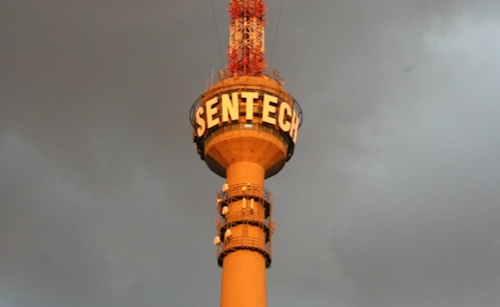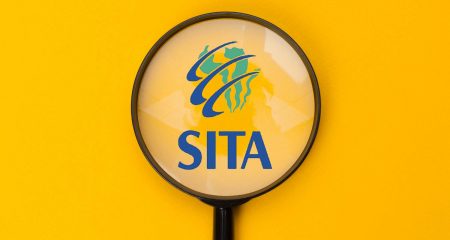
If you worked for five years on one project and had little to show for your efforts, would your boss fire you?
The government has been plugging away at the digital terrestrial television migration now for half a decade and the broadcasting sector says the building blocks are still not in place. So what went wrong? And, why can’t we get it together?
The Mail & Guardian takes you inside the five-year catastrophe that is digital migration.
A further delay
Late last month, SA’s new minister of communication, Dina Pule, who has been in the job for little more than three months, announced that the deadline for switching on digital television signals, which had been set down for April 2012, would be shelved.
This is just another delay in a process that has seen many setbacks over the past five years.
When a country makes the switch over from analogue television to digital, there are two important dates. The first is the date on which digital television signals are launched and the second is the date on which the analogue television signal is turned off for good.
The period between the two is known as the dual-illumination period during which both digital and analogue signals run side by side. This period is the timeframe within which the country needs to convert all its analogue television households to digital set-top boxes.
So what Pule’s announcement means is that, in effect, the government will not turn on the digital television signals before the date when it was meant to have turned off the analogue signal for good.
To say we are running a little behind is an understatement. The department of communications insists that the digital signal will be switched on sometime “around September 2012”.
During the past five years, SA has had four communication ministers, all of them with their own ideas and agendas regarding digital migration. This makes it difficult to lay the blame squarely at anyone’s feet — they have all contributed to the delay.
Industry insiders who spoke on condition of anonymity said that the digital terrestrial television migration process had not reached even the starting gate, with set-top box standards and multiplex capacities, which are the building blocks for the process, still not finalised.
“We are going to miss the 2015 deadline,” said one industry insider.
As a signatory to the International Telecommunication Union, SA has agreed to meet the global analogue switch-off date of 1 June 2015. After this date, countries’ television signals will not be protected against interference.
Why digital migration?
Radio spectrum is a very scarce resource and can deliver various broadcasting and wireless broadband products to customers.
At present, SA’s terrestrial free-to-air broadcasters are sitting on choice radio spectrum that could be used to deliver wireless broadband services.
With analogue, each spectrum channel or multiplex is used to deliver a single analogue television channel. With digital television, the multiplex can deliver up to eight channels.
So digital migration will not only allow the opportunity to offer more television channels but it will also allow spectrum to be freed up for use by wireless broadband players.
In fact, the Independent Communications Authority of South Africa (Icasa) has already begun a process in which wireless broadband players can apply for new tranches of the 800MHz band that will be freed up by digital migration.
Icasa has identified the 800MHz band to roll out wireless broadband services to rural areas, so the longer digital migration takes, the longer it will take to service rural South Africans with broadband products.
The department
The department of communications cannot help the fact that it has had four ministers in five years but it insists that the current minister is aware that digital migration is very important for the country.
The minister’s spokesperson, Siyabulela Qoza, said: “The department has set up a digital terrestrial television (DTT) branch with a project manager and a ministerial advisory team. Their task is to deal with DTT matters on a daily basis.”
Industry insiders argue that the department lacks staff who understand the digital migration process and complain that the process has been centralised within the department. “There is a command and control approach to DTT,” an industry insider said.
However, the department insists that a broadcasting migration project plan, which clearly details the activities and milestones to be achieved, is being implemented.
But the department only published its policy on digital migration this month and, according to industry insiders, still has to get its business plan for digital migration finalised and approved by the cabinet and the parliamentary portfolio committee on communications.
The department did not respond to questions about its business plan.
Icasa and the DTT regulations
Icasa is responsible for the regulations governing digital migration but these have been hampered by technological reviews and legal challenges.
The digital migration working group, which was appointed by the late former communications minister Ivy Matsepe-Casaburri in 2006, delivered its final report in 2008, which was adopted by cabinet.
But Icasa’s first digital migration regulations where withdrawn in 2009 after a legal challenge from e.tv over the allocation and management of multiplexes.
Icasa’s second set of regulations were withdrawn in 2010 so they could be reviewed after questions about digital television standards were raised.
Industry insiders say that government’s decision to review the standards, which were driven by then communications director-general Mamodupi Mohlala, were a waste of time.
Mohlala was behind the controversial move to consider the Brazilian/Japanese standard ISDB-T after the DVB-T standard had been selected in 2006 and included in policy, and after the local industry had spent millions of rands in running trials on it. The end result was that government decided on DVB-T2 technology.
Icasa again withdrew its regulations to accommodate the change in standards from DVB-T to DVB-T2.
“The authority has since published the draft DTT regulations, and submissions were received to that effect,” said Icasa spokesperson Paseka Maleka.
Maleka said the public hearings for the draft regulations had been scheduled for mid-March 2011.
Set-top box manufacturing
When the department reported to parliament in October last year, it said that a set-top box manufacturing strategy had been developed and was awaiting cabinet approval, and that the set-top box standards where expected to be completed by November 2011.
Three months later and the cabinet has still not approved the strategy, although the standards are expected to be completed this month and gazetted.
It appears that the industry and government don’t see eye to eye on set-top box manufacturing. Industry insiders argue that the plan to use digital migration to create a set-top box manufacturing sector in SA was first raised by former communications director general Lyndall Shope-Mafole. But, they say, the plan is poorly thought out and that there is no way SA can compete for orders in the Southern African Development Community region, because international manufacturers will beat SA on price.
According to the insiders, there are two companies in SA with the capabilities to assemble set-top boxes and none that manufactures them. They are UEC, a subsidiary of Altech, and Divitech, a joint venture between Reunert and Nozala Investments, although both would consider themselves manufacturers rather than assemblers of set-top-boxes, even though a large proportion of the parts are imported.
“We don’t even manufacture set-top boxes here, we assemble boxes,” an industry insider said. “Now we can suddenly be globally competitive? It’s nonsensical.”
Depending on who you speak to, from the time that the companies get the go-ahead, it is going to take the set-top box manufacturers between six and 18 months to get the first boxes in store.
Set-top box subsidy scheme
Developed by the department, the scheme for ownership support is reported to have been put before the cabinet for its approval since September last year.
As envisioned by the department, the scheme will see the poorest of SA’s 10m television households undergo a means test to establish who would qualify for a subsidy.
According to an industry insider, the department set up a digital migration working group in 2006 and an economic model done for the group on set-top box prices and affordability showed that 5m television households could not afford the set-top box at any price.
The government’s plan to get around this appears to be a subsidy, which will see it set aside R2,45bn to subsidise the boxes for the 5m households, bringing down the estimated price from R700 to R300. But insiders argue that this is still not enough and the government is putting itself in a difficult position.
The model for the subsidy scheme has come under fire, with industry insiders arguing that a voucher system, which is currently in favour, would result in the 5m households undergoing a means test before they received a voucher for a subsidy. Anyone wanting to access the subsidy would have to prove they received a social grant and had a paid-up television licence.
“The poorest of the poor don’t have television licences,” said an insider. “You can’t cut off a large chunk of South Africans by taking television away from them. The ANC are getting themselves into a sticky situation and it’s going to cost them financially.”
Industry insiders also say that the voucher system would place a heavy strain on retailers who would have to accept the vouchers and then reclaim the money from the government.
The insiders generally favour the state subsidising the manufacturers to produce cheaper set-top boxes. “Everyone has told the government that a retail subsidy is not the way to go,” said one insider. “There will be supply chain issues, manufacturers will have to take a hit upfront and the retailers will not be happy either.”
The department sees things differently, arguing that the process is not overly bureaucratic. “The government has to protect the investment it is making to support the poor TV-owning households,” said Qoza. “The department, working together with its agencies, will have the capacity.”
Qoza said that the cabinet had not decided yet on a subsidy.
Billions to fund the process
Finance Minister Pravin Gordhan’s budget shed some light on how the digital migration process will be funded over the next few years.
About R230m was allocated to the set-top-box subsidy, which will be implemented by the Universal Service & Access Agency of SA, with R240m allocated in 2013-14 and R240m in 2014-15.
The SABC has been allocated R76m for the 2013-14 financial year and R62m for the 2014-15 financial year to cover its digital migration needs, while Sentech has been allocated R166m this year and R477m over the next two financial years to fund the dual-illumination process. — Lloyd Gedye, Mail & Guardian
- Lloyd Gedye is a senior business journalist at the Mail & Guardian
- Visit the Mail & Guardian Online, the smart news source
- Subscribe to our free daily newsletter
- Follow us on Twitter or on Google+ or on Facebook
- Visit our sister website, SportsCentral (still in beta)




